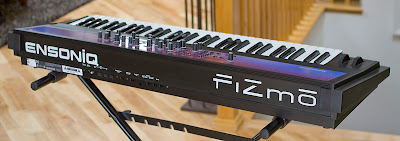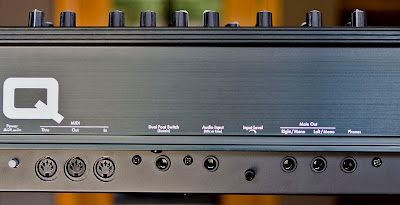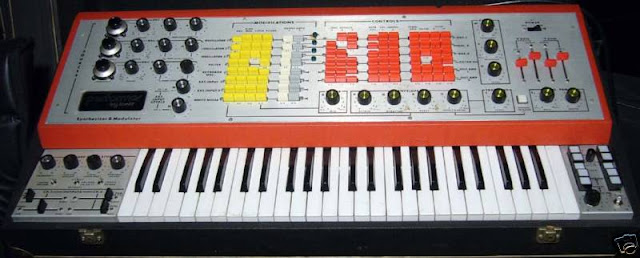CUtRSf!~~_3.JPG)
via
this auction
be sure to see the Ionic label below for more. Details from the auction:
"Many know the EMS Synthi AKS as THE synth used in Pink Floyd's Dark Side of the Moon. The low bass sequence loop in "On The Run" is the Synthi. The Synthi AKS is one of the most coveted, rare and expensive analogs of yore. Few know of the Ionic Performer.
CVGd6o!~~_3.JPG)
Quote Found on the internet: "Somewhere in my collection of EMS material I have a lurid photo of the Ionic Performer you mention. I remember attending a NAMM show in Chicago in the early seventies where Ionic Industries had a small booth and were exhibiting the Performer. You are correct that it was a repackaged VCS3 with an integral keyboard. Instead of the pin matrix it had rows of rectangular push-button switches - like an early ryhthm box. What really struck me about it was the publicity leaflet which brazenly announced 'No skill required' in its operation, before expanding further on this theme. It still had the familiar vernier dials for tuning the oscillators. I spoke to Steve Mayer on the stand but no Alfred. Dealings with Ionic were soon curtailed and from about 1972 the US side of the business was handled by Dr. Everett Hafner and his company EMSA from Amherst, Mass."
The left block contains the keyboard oscillator - frequency, tuning spread (distance between notes), level, octave divider and doubler, and whether the keyboard dynamics or voltage were routed to the modification rails. Also on the block are the left and right output level controls, and their pan positions (affecting only the line output).
CVD!)-Q~~_3.JPG)
There are two main oscillators (sine/triangle and square/triangle) and one square with an extended low range (to .01 Hz -- a direct-coupled output that caused Killer to regularly blow up my transistorized Dynaco power amps). The shape (duty cycle) is adjustable as is the relative level of the waveform pairs. Below is the external input level control (line or microphone could be modified as well as the oscillators) and the routing of the keyboard oscillator as a source. The last source in the group is white noise.
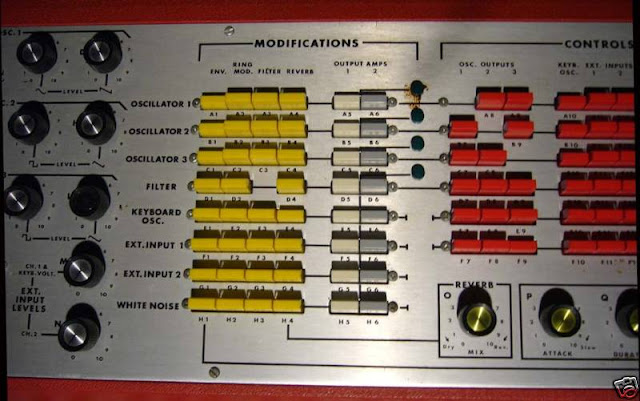
Each source can be modified by an envelope, ring modulator (modulated from any other source), filter, and reverb, and be routed to either or both output amp directly. Note that the filter (either with modified output or ringing at the Q point) could also be a source, as well as the keyboard oscillator, external inputs, and white noise. To make sure the player knew which oscillators were in use, there are four green lights (one for the oscillators, one for any other source).
Beginning at the bottom is the reverb (spring reverb), with a nice, rich dry/wet mix. To the right is an Attack/Duration/Decay envelope. The automatic envelope trigger control is to the right. The switches at the top patch the output of one device to the input of another. Only the oscillators and filter can't be patched to themselves, and the white noise has no input. But you could create some pretty unbelievable sounds with this matrix! Note the three items first introduced here, the trapezoid controller (actually the envelope used as a voltage source) and the two "sticks" (pseudo-joysticks).

The filter allows adjustment of frequency, response (Q, right to the feedback point so it could be used as another oscillator), and output level. The trapezoid (envelope) level is also adjustable. The "sticks" adjust two "axes" -- assignable to any device, and adjustable (using the two limit sliders) from no effect to full range. The sticks make this one heck of a microtonal machine. The system is +/-18 volts, so the limit range is extensive. Power and speaker on/off switches are at the top. To the right is the "Z axis" (auto pan/phase) pullswitch and level control. A manual envelope trigger is available, and trigger was normally routed to the keyboard in every case.
The right keyboard block controls final output functions. The two channels can be assigned portamento (which worked quite well) with adjustable pitch slide speed that makes Midi look positively amateur, fuzz, tremolo (triangle controller) and repeat (square controller). The latter two could be given a different variable rate for each channel, and combined with the Z-axis auto-pan, zowdy! These buttons are illuminated.
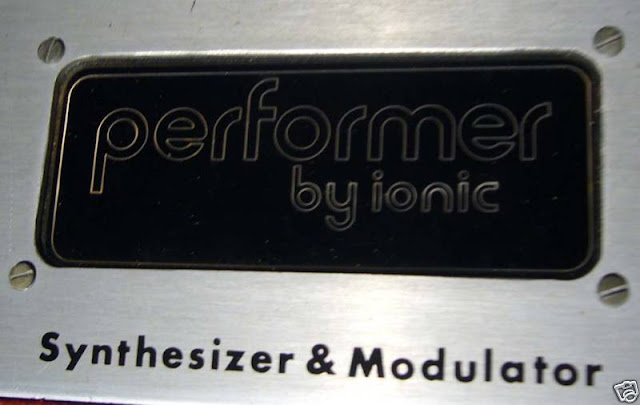
The designers had ergonomics down before IBM invented the term. Color-coding and logical layout made the instrument performable in near-darkness.
For the most detailed information on this EXTREMELY RARE SYNTH, please see the website:
link"



 via this auction
via this auction - 20-bit D/A conversion with 100dB dynamic range.
- 20-bit D/A conversion with 100dB dynamic range.


